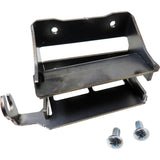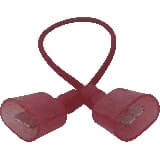Ignition problems nearly ALWAYS have something to do with a dirty stove. Make sure your stove, the venting and the clean-out area inside the burnpot cavity where the igniter resides is free and clear. If these areas are clean and you still do not have ignition or maybe you only have ignition sometimes...and if you do it take s a very long time, inspect your door gasket and your door latch. If the door does not make a tight seal the stove can have problems igniting.
If your igniter light is not illuminated on the control board, chances are the igniter toggle switch is in the "manual" position. The igniter MUST be in the auto position to receive power. If the stove is not feeding at start up but the feed light and the ignition light are illuminated, the air flow switch is not closing or, on some models, a hopper lid switch is also in-line with this common wire. Make sure the hopper lid is secure and try the start-up sequence again. If you still do not get feeding, remove the hopper lid switch from circuit and try it again. If this works, replace the hopper lid switch.
If your stove blows a fuse when you try to start the stove but does not blow a fuse when the igniter is switches to "manual", there is going to be an exposed igniter wire touching the metal of the burn pot or the igniter itself is shorted out to the cradle mount.
The feed motor and the igniter share the same common wire return back to the controller. If your stove is feeding at start-up but will not ignite, open the door and feel the burnpot to see if there is heat present from the igniter. If there is heat, the igniter is working but there is a problem with air flow. Most of the time, the clean-out area where the igniter resides is dirty and/or the fins of the igniter are clogged with ash debris. Using a 5/16" or 8mm socket, loosen the mounting screws for the igniter two full turns and then using your fingers, tap the ignition assembly inside the burnpot to shake out the debris. Try the start-up sequence again.
If your stove still will not ignite, inspect your burnpot for cracks or wear-holes on the burn plate surface. If you see any, replace the burnpot.
It is advisable to ALWAYS replace your door gasket when you are replacing an igniter. A leaking door gasket is often a contributing factor to igniter failure.
Troubleshooting Igniters:
Igniter failure can be verified on one of three ways. The easiest and most common way to see if the igniter is working is to start your stove or grill and visually look for the orange glow; however, some appliances do not have a visual way to do this, so you may have to physically feel around in the burn pot after the stove has been on for a few minutes to “feel” for heat being generated. If you can see the glow or can feel the heat from the igniter, chances are that the igniter is actually working. If this is the case, retry the startup process. Make sure your burn pot is seated correctly if it is removable. Make sure that your ash pan, door or hopper lid is closed as this will provide an airtight seal on the stove, which most igniters will require for proper ignition. If you still do not have any luck, give the stove a good cleaning, including the vent, and try again. If these attempts fail, further troubleshooting will be required, which leads us to the third method.
For this method, you will need a DMM (Digital Multi-Meter). Gain access to the igniter and remove it from the stove or insert. While you are taking the igniter out, verify that it is installed correctly with the correct mounting equipment, screws, etc.. With the igniter removed from the stove, you will need to look over the part to find the rated watts, it’s usually stamped on the metal somewhere. If you cannot find it, look on our website for the correct igniter; the information you are looking for will be under “technical specs”
If your Ohms reading is within 10%, more or less than the rating (46Ω +/- 10%), it’s good. If the igniter has a “contained short” or a short within itself and not grounding out, your Ohms reading will be very low...usually in the single digits. Generally, you cannot have a faulty igniter with too high of a resistance reading unless an igniter is installed that is way out of spec. An example of this would be your stove requires a 300W igniter but the stove has a 250W igniter installed. The reading in this scenario would be 52Ω. The reading would be correct to the igniter but would be the wrong value for the specified 300W igniter. That’s why it’s usually good to look at the part itself for the watts rating.










